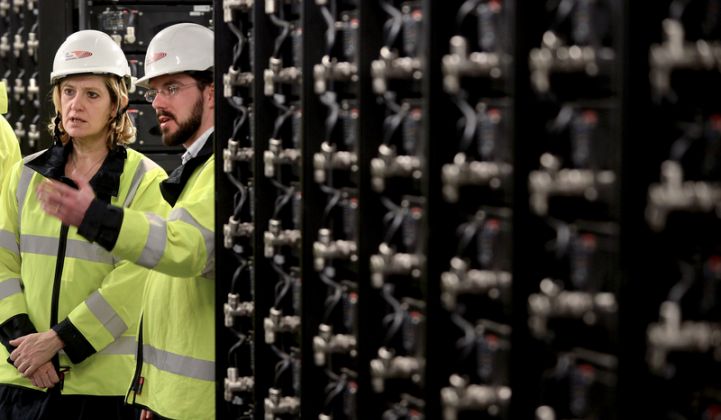Germany's commercial and industrial sector has been a difficult one for energy storage companies to crack. But leading vendors are predicting an increase in demand for on-site storage systems from large corporations.
Philip Hiersemenzel, a spokesperson for the German project developer Younicos, told GTM that demand “will emerge in the near future.”
Compared to Germany’s vigorous residential energy storage market, the commercial and industrial segment has failed to ignite due to a combination of factors.
Demand curves in German factories and warehouses tend to be a fairly good fit with solar PV output, so companies can take a sizeable chunk out of their energy bills without having to resort to storage.
“The energy storage demand for factories and industrial estates depends on the load profile,” explained Andreas Piepenbrink, CEO and managing partner of the German energy storage system developer E3/DC.
“The load profile of day-shift operations contains more than 70 percent of the total energy consumption," said Piepenbrink. “As a consequence, energy storage is too costly, and direct solar generation on the factory ground already yields 80 percent to 90 percent of day-shift autonomy, at much better economics.”
In addition, German industrial power users don’t have as much of an incentive to avoid peak power costs as do their U.S. counterparts.
“The main driver in the U.S., where there is a growing market, is demand charges, and in Europe these are significantly lower,” observed Bloomberg New Energy Finance associate Logan Goldie-Scot.
According to Piepenbrink, matching grid-energy prices for a large German power consumer “is not achievable for energy storage as of now.”
Demand from Germany’s commercial and industrial segment has been lackluster compared to the residential market, which will see 15,000 new installations this year, according to EuPD Research.
Germany has also lagged behind in the utility storage market. Nevertheless, the country does have several landmark projects, such as Younicos’ 5-megawatt WEMAG battery park and Bosch’s 2-megawatt Braderup facility.
However, according to Younicos' Hiersemenzel, “We see this shifting, are in talks with a number of big commercial and industrial players, and have deals in the pipeline around commercial real estate with solar integration.”
Still, developers may need to work harder to make the commercial and industrial energy storage business case stack up without the kind of punitive demand charges that U.S. companies face, Hiersemenzel said.
“This will definitely be a market for hybrid business cases, requiring the provision of several services in parallel and thus enabling several advantages or revenue streams,” he said.
For U.S. companies watching the German market, expanding energy storage within the commercial and industrial sector is seen as a logical step within the country’s wider Energiewende transition to renewable power sources.
“My sense is that market dynamics there around solar and storage are pointing to the need for and value of self-consumption," said Erick Petersen of Demand Energy, which has a strong commercial-scale customer focus in the U.S.
For now, Germany's residential market will continue to guide the storage business.
The number of residential installations is expected to jump to between 20,000 and 25,000 next year, according to EuPD figures cited by Piepenbrink. Beyond that, the market is forecast to add 30,000 to 35,000 installations a year up until 2020.



